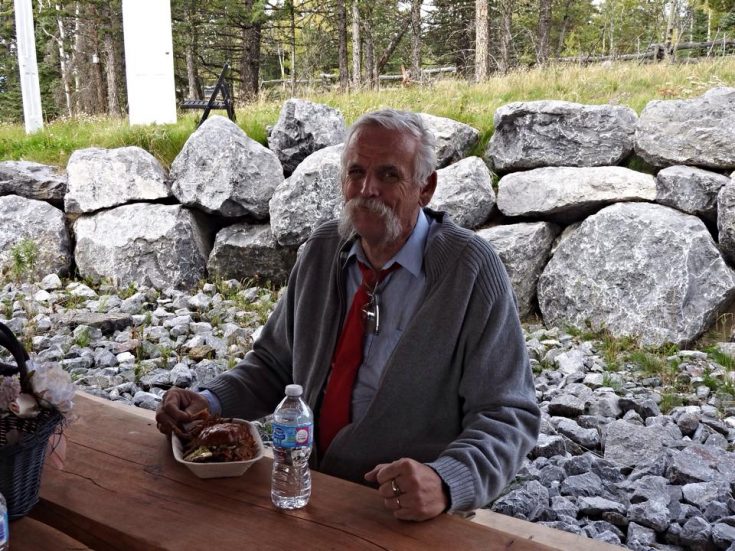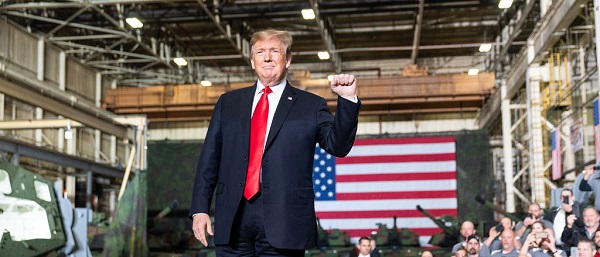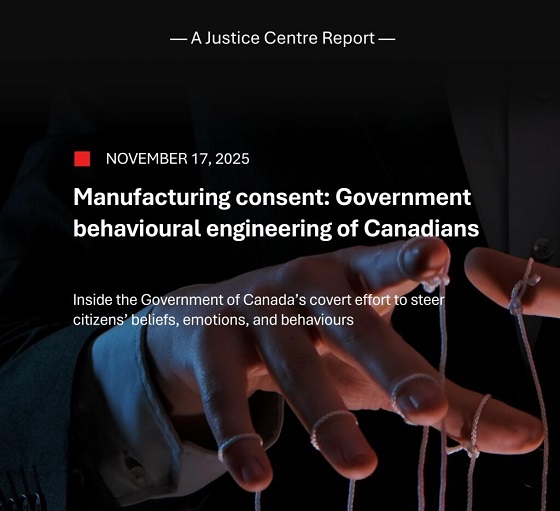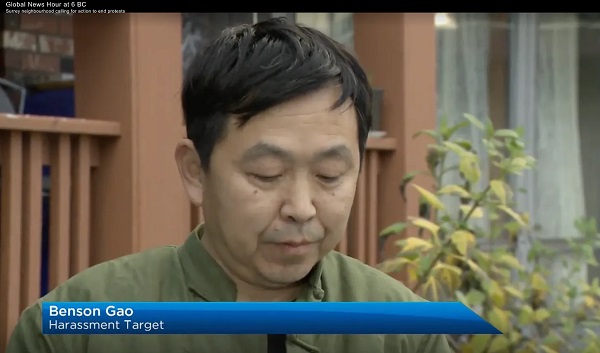Opinion
Red Deer’s Air Quality debate reminds me of cigarette smoke debate or climate change debate.

Millions have been spent, and years of study by great minds and equipment has been upgraded and replaced to ensure, double check and triple check our air quality.
September 2015, the Provincial Health Minister reported: “Alberta on track to have worst air quality in Canada, Red Deer has worst pollution in province, while 4 other regions close to exceeding national standards”
The permanent monitoring at Riverside Park has been reading the highest in Red Deer and there could be reasons, topography, river, or something else. We are talking about years of data, wide ranging and intricate data. Our air quality is affected by many pollutants, compounds, and elements. Nitrogen Oxides, Sulfur Oxides, Carbon Oxides, Volatile Organic Compounds, and Particulate Matter, specifically PM2.5.
Concentrate on one element or remove one element and you will skew the data. If you listen to the Health Minister and read the data as a package, the information shows that the Red Deer Region is the worst in Alberta, with 4 other regions following close behind.
Riverside Park has the worst readings in Red Deer, but there are small pockets in other regions that will show worst readings in one or more of the pollutants.
The latest discussion is about downtown Calgary and downtown Edmonton has worst readings than the Red Deer Riverside Park. It is like comparing apples and oranges.
Regionally, Red Deer has the poorest air quality as a whole in Alberta, and yes there are pockets of air throughout the province with higher particulate matter, or carbon dioxide, or VOCs Volatile Organic Compounds.
The fact that we are experiencing a downturn in our economy and the fact that Red Deer has seen a large decrease of about 1,000 in population last year, manufacturing is down, businesses are closing and/or relocating we should see less emissions and therefore cleaner air, but I do not think that is the way we wish to achieve a desired result.
The province stands by it’s reports, will argue against selective interpretations of opposition. The province will study, consult, converse and seek the answers but they will not adjust the readings to accommodate the desires of others.
I would rather know the truth and find solutions than search for those who deny there is an issue. We have seen this with ozones, climate change and cigarette smoke, first and second hand, so it is expected.
Daily Caller
ALAN DERSHOWITZ: Can Trump Legally Send Troops Into Our Cities? The Answer Is ‘Wishy-Washy’


From the Daily Caller News Foundation
If I were still teaching a course on constitutional law, I would use President Donald Trump’s decision to send troops into cities as a classic example of an issue whose resolution is unpredictable. There are arguments on both sides, many of which are fact-specific and depend on constantly changing circumstances.
A few conclusions are fairly clear:
First, under Article 2 of the U.S. Constitution, the president clearly has the authority to send federal law enforcement officials to protect federal buildings or federal officials from danger. Moreover, the president gets to decide, subject to limited judicial review, whether such dangers exist. State and city officials cannot interfere with the proper exercise of such federal authority.
Dear Readers:
As a nonprofit, we are dependent on the generosity of our readers.
Please consider making a small donation of any amount here.
Thank you!
Second, and equally clear, is that if there is no federal interest that requires protection, the president has no authority to intrude on purely local matters, such as street crime. The 10th Amendment and various statutes leave local law enforcement entirely in the hands of the states.
Third, the president has greater authority over Washington, DC, even with the District of Columbia Home Rule Act of 1973, than he does over other cities.
Fourth, there are limited situations in which the president has authority, even if there is no direct federal interest in protecting a federal building or authorities. One such instance is an “insurrection.”
Yet the law is unclear as to a) the definition of an insurrection; b) who gets to decide whether an insurrection, however defined, is ongoing; and c) what is the proper role of the judiciary in reviewing a presidential decision that an insurrection is occurring.
The same is true of an invasion. This is somewhat easier to define, but there will be close cases, such as a dictator sending hordes of illegal immigrants to destabilize a nation.
How Do We Legally Define What’s Happening Now?
In a democracy, especially one with a system of checks and balances and a division of power such as ours, the question almost always comes down to who gets to decide? Our legal system recognizes the possibility ‒ indeed, the likelihood ‒ that whoever gets to make that decision may get it wrong.
So the issue becomes: Who has the right to be wrong? In most democracies, especially those with unitary parliamentary systems, the right to be wrong belongs to the elected branch of government ‒ namely, the legislature. At the federal level, that’s Congress, under Article 1 of the Constitution.
However, since the Supreme Court’s decision in Marbury v. Madison in 1803, all legislative decisions are subject to constitutional judicial review. Even a majority of the voters or their legislators are not empowered to violate the Constitution.
And if the Constitution is unclear, ambiguous or even inconsistent? I have a cartoon hanging in my office showing one of the framers saying to the others: “Just for fun, let’s make what is or isn’t constitutional kind of wishy-washy.”
Well, on the issue of presidential power to send troops into cities over the objection of local politicians, the Constitution is kind of “wishy-washy.” To paraphrase former Supreme Court Justice Potter Stewart, when he discussed hardcore pornography: “Perhaps I could never succeed in intelligibly (defining it), but I know it when I see it.”
The same may be said of an insurrection. It’s hard to define in advance with any degree of precision except at the extremes, but not so difficult to identify if one sees it.
The Legal Endgame Here Isn’t Clear, Either
The Civil War was an insurrection. Anti-Israel protests on campuses were not. But what about the violence in cities like Portland, where left-wing protesters burned cars and buildings and blocked access in 2024?
Some of these groups would love nothing more than to incite an insurrection, but they lack the power, at least at the moment, to garner sufficient support for anything broader than a violent demonstration or riot.
Does the president have to wait until these quixotic “insurrectionists” have garnered such support? Or can he take preventive steps that include sending in federal law enforcement officials? What about federal troops? Is that different?
These questions will eventually make their way to the Supreme Court, which is likely to try to defer broadly based and categorical answer as long as possible. In the meantime, district judges in cities across the country will rule against the president, except in cases involving protection of federal buildings, federal officials and the nation’s capital.
The president will appeal, and the appellate courts will likely split, depending on the particular circumstances of the cases.
“Wishy-washy” and “we’ll know it when we see it” are the best we are going to get in this complex situation.
Alan Dershowitz is professor emeritus at Harvard Law School and the author of “Get Trump,” “Guilt by Accusation” and “The Price of Principle.” This piece is republished from the Alan Dershowitz Newsletter.
Daily Caller
Democrats Explicitly Tell Spy Agencies, Military To Disobey Trump


From the Daily Caller News Foundation
Democratic Michigan Sen. Elissa Slotkin posted a video to social media Tuesday morning in which she and five of her congressional colleagues called for the military and the intelligence community to “stand up” to President Donald Trump’s administration.
The half-dozen Democratic lawmakers who took part in the video titled, “Don’t give up the ship,” had all served as military or intelligence officers. In her X post of the video, Slotkin stated the lawmakers seek to “directly” tell service members and intelligence personnel that the “American people need you to stand up for our laws and our Constitution.”
“We know you are under enormous stress and pressure right now,” Slotkin, a former CIA officer, said in the video she appeared in alongside Democratic Arizona Sen. Mark Kelly, Democratic Pennsylvania Reps. Chris Deluzio and Chrissy Houlahan, Democratic New Hampshire Rep. Maggie Goodlander and Democratic Colorado Rep. Jason Crow.
“Americans trust their military,” said Houlahan, a former Air Force officer.
“But that trust is at risk,” added Deluzio, a former officer in the Navy.
“This administration is pitting our uniformed military and intelligence community professionals against American citizens,” Kelly, a former Navy officer, said in tandem with Crow, a former Army officer, and Slotkin.
WATCH:
“Our laws are clear. You can refuse illegal orders. You can refuse illegal orders. You must refuse illegal orders,” Kelly, Slotkin and Deluzio said later in the video.
“Like us, you all swore an oath to protect and defend this Constitution,” Kelly and Goodlander, a former naval intelligence officer who is married to Biden-era former national security adviser Jake Sullivan, charged military and intelligence personnel.
Deluzio and Crow claimed that “threats to our Constitution aren’t just coming from abroad, but from right here at home.”
The lawmakers added that they know that what they are urging is “hard” and that “it is a difficult time to be a public servant.”
“But whether you are serving in the CIA, the Army, our Navy, the Air Force, your vigilance is critical. And know that we have your back,” they continued, alternating lines. “Because now more than ever, the American people need you. We need you to stand up for our laws, our Constitution, and who we are as Americans.”
“Don’t give up, don’t give up, don’t give up, don’t give up the ship,” the Democrats concluded.
Article II, Section 2 of the Constitution states that the president is the commander-in-chief of the armed forces. The president is also in charge of intelligence agencies such as the FBI and CIA, by virtue of being head of the Executive Branch of the federal government — a responsibility laid out in Article II, Section 1.
“Don’t give up the ship” is a common phrase that dates back to the War of 1812 and were the last words uttered by Navy Captain James Lawrence before he succumbed to his gunshot wound on the USS Chesapeake.
-

 Alberta2 days ago
Alberta2 days agoAlberta Offers Enormous Advantages for AI Data Centres
-

 Alberta2 days ago
Alberta2 days agoNational Crisis Approaching Due To The Carney Government’s Centrally Planned Green Economy
-

 Alberta2 days ago
Alberta2 days agoCalgary mayor should retain ‘blanket rezoning’ for sake of Calgarian families
-

 Bruce Dowbiggin2 days ago
Bruce Dowbiggin2 days agoSports 50/50 Draws: Make Sure You Read The Small Print
-

 Carbon Tax22 hours ago
Carbon Tax22 hours agoCarney fails to undo Trudeau’s devastating energy policies
-

 Agriculture1 day ago
Agriculture1 day agoFederal cabinet calls for Canadian bank used primarily by white farmers to be more diverse
-

 COVID-192 days ago
COVID-192 days agoNew report warns Ottawa’s ‘nudge’ unit erodes democracy and public trust
-

 Censorship Industrial Complex2 days ago
Censorship Industrial Complex2 days agoQuebec City faces lawsuit after cancelling Christian event over “controversial” artist







